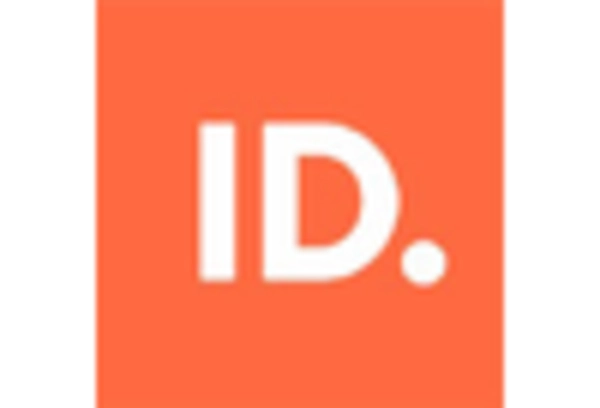Rising Cybersecurity Concerns
The increasing frequency of cyberattacks in North America has heightened the demand for robust security measures, particularly in the signature verification market. Organizations are increasingly recognizing the vulnerabilities associated with traditional signature methods, which are often susceptible to forgery and fraud. As a result, there is a growing inclination towards adopting advanced signature verification solutions that utilize biometric and digital technologies. According to recent data, the cybersecurity market is projected to reach $300 billion by 2024, indicating a strong correlation with the need for secure signature verification systems. This trend suggests that businesses are prioritizing the protection of sensitive information, thereby driving growth in the signature verification market.
Increased Focus on Customer Experience
In the competitive landscape of North America, businesses are placing a greater emphasis on enhancing customer experience, which is influencing the signature verification market. Companies are recognizing that seamless and efficient verification processes can significantly improve customer satisfaction. As a result, there is a trend towards implementing user-friendly signature verification solutions that minimize friction during transactions. This focus on customer experience is likely to drive the adoption of innovative verification technologies, as organizations strive to create a more engaging and secure environment for their clients. The potential for improved customer loyalty and retention further underscores the importance of effective signature verification systems.
Growing E-commerce and Digital Transactions
The rapid expansion of e-commerce in North America has significantly influenced the signature verification market. As online transactions become more prevalent, the need for secure and reliable verification methods has intensified. Businesses are increasingly adopting electronic signatures to facilitate transactions, which necessitates robust verification systems to ensure authenticity. In 2025, e-commerce sales in North America are projected to exceed $1 trillion, underscoring the importance of secure signature verification in this digital landscape. This growth indicates a shift towards digital solutions, where signature verification plays a crucial role in maintaining trust and security in online transactions.
Regulatory Pressures and Compliance Requirements
The signature verification market is increasingly shaped by regulatory pressures and compliance requirements in North America. Organizations are mandated to adhere to various regulations concerning data protection and authentication, which necessitates the implementation of reliable signature verification solutions. Compliance with regulations such as the Electronic Signatures in Global and National Commerce Act (ESIGN) and the Uniform Electronic Transactions Act (UETA) is crucial for businesses operating in this space. As regulatory scrutiny intensifies, companies are likely to invest in advanced signature verification technologies to ensure compliance and mitigate risks associated with non-compliance. This trend is expected to drive growth in the signature verification market as businesses seek to align with legal standards.
Technological Advancements in Verification Solutions
The signature verification market is experiencing a surge in innovation, driven by advancements in technology. The integration of machine learning and artificial intelligence into signature verification systems enhances accuracy and efficiency, making them more appealing to businesses. These technologies enable real-time analysis and verification of signatures, reducing the risk of human error. Furthermore, the market for biometric authentication is expected to grow at a CAGR of 20% from 2023 to 2028, reflecting the increasing reliance on sophisticated verification methods. As organizations seek to streamline their operations and improve security, the demand for technologically advanced signature verification solutions is likely to rise, further propelling the market.


















Leave a Comment